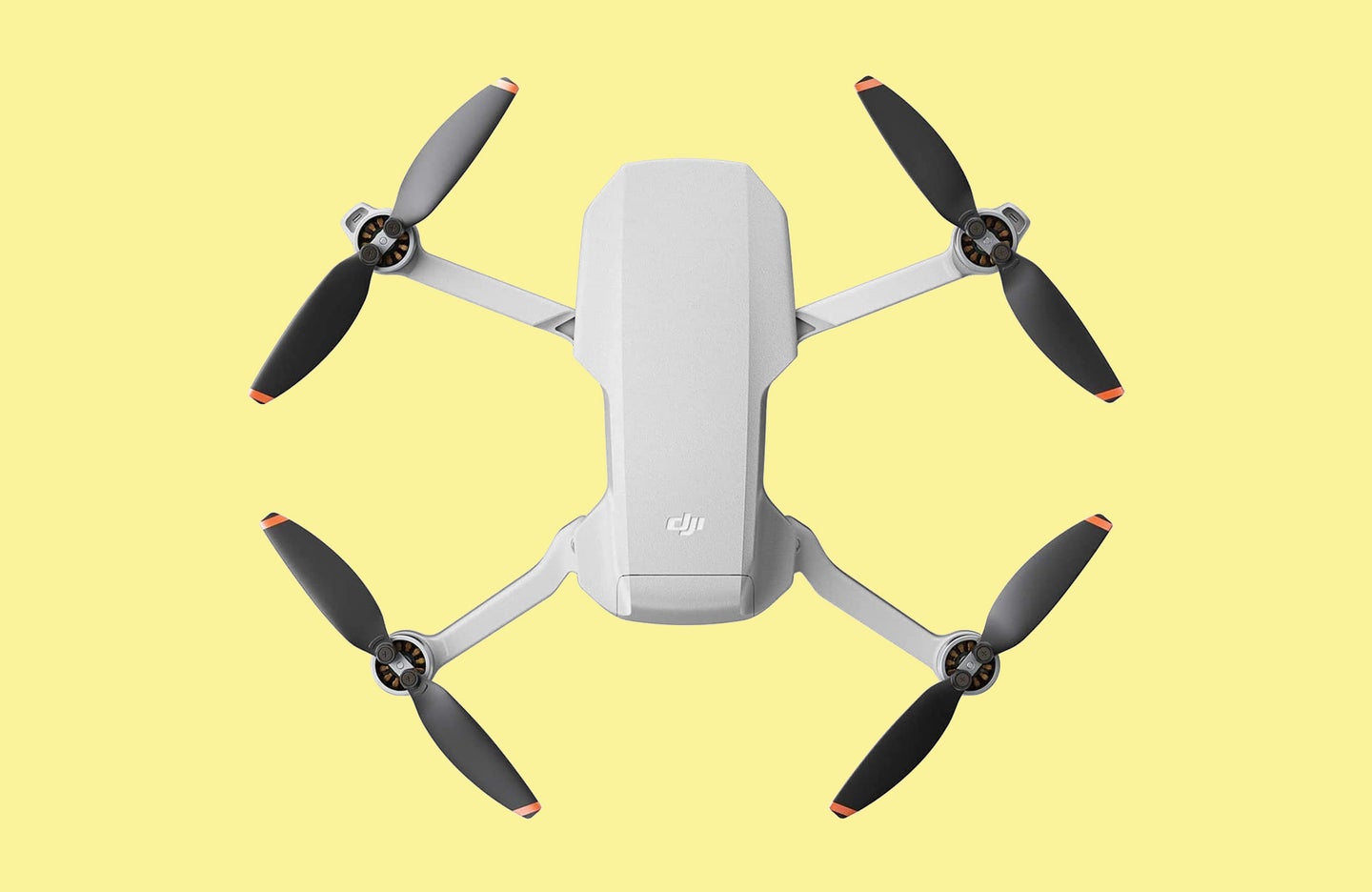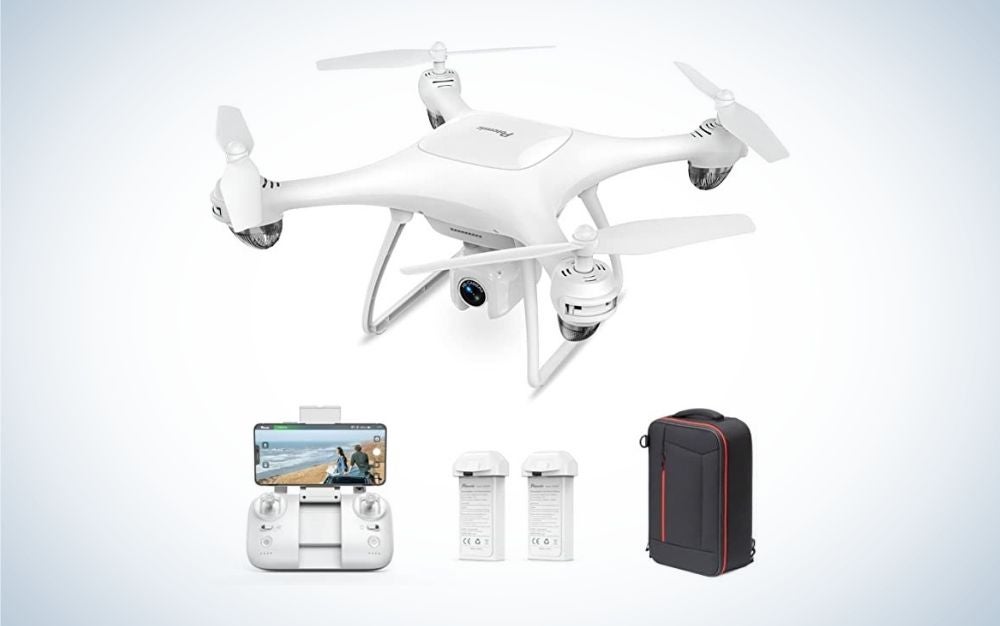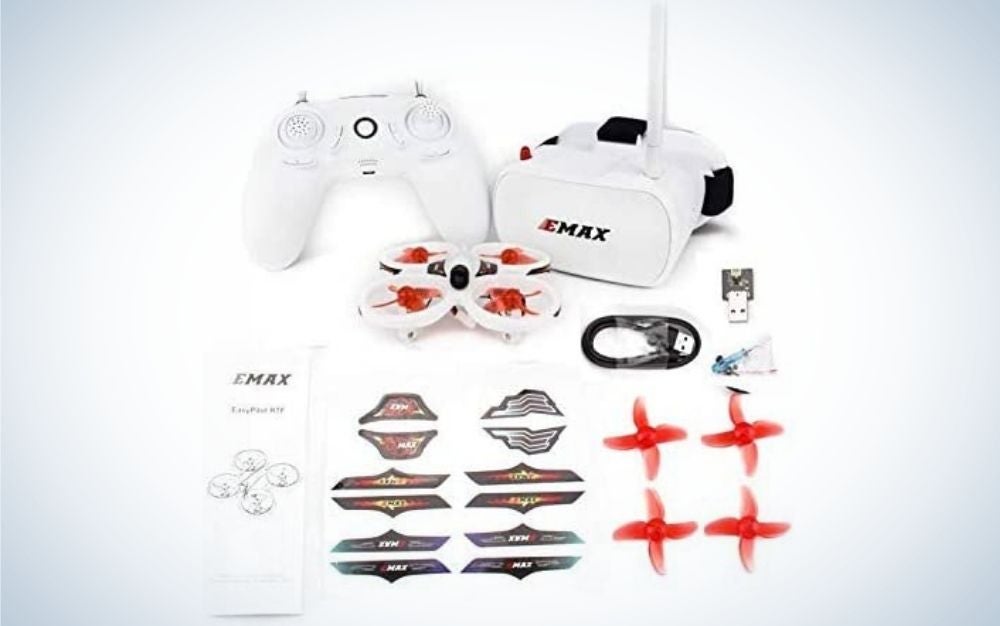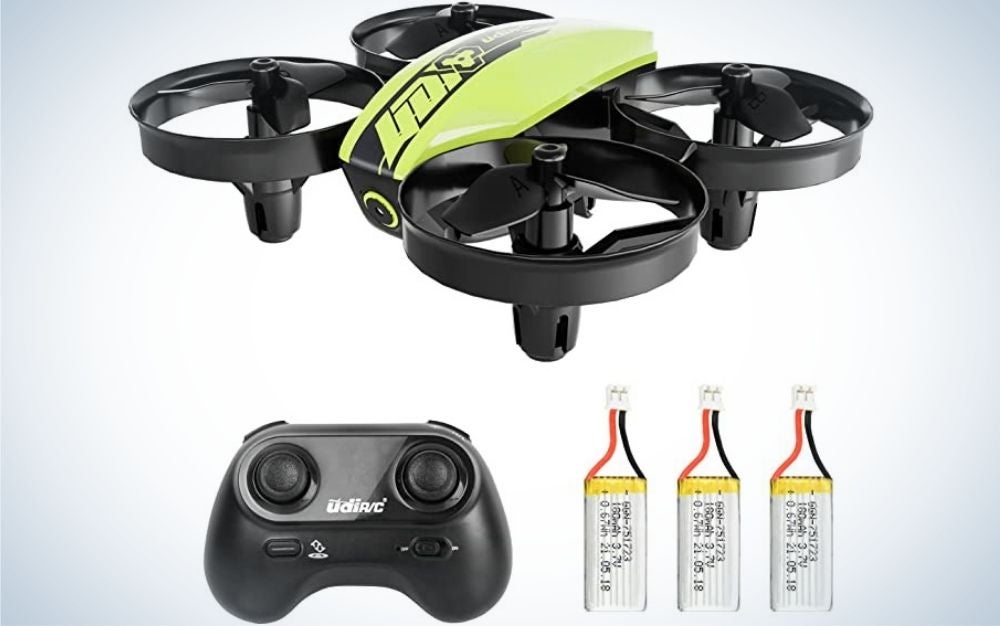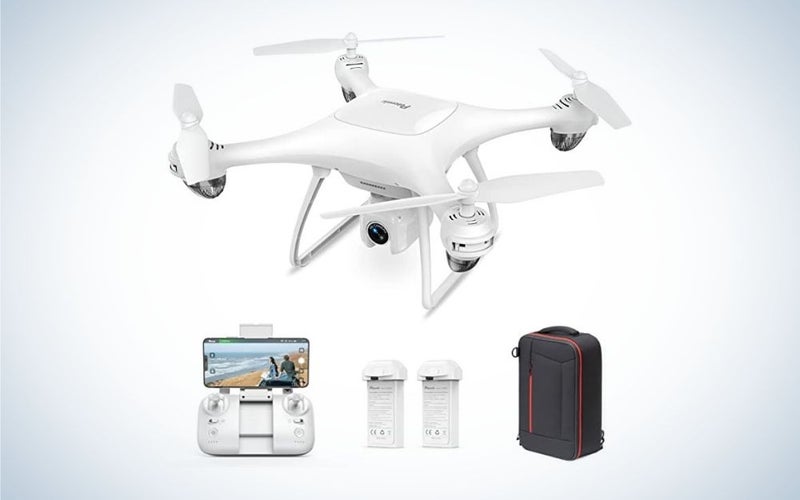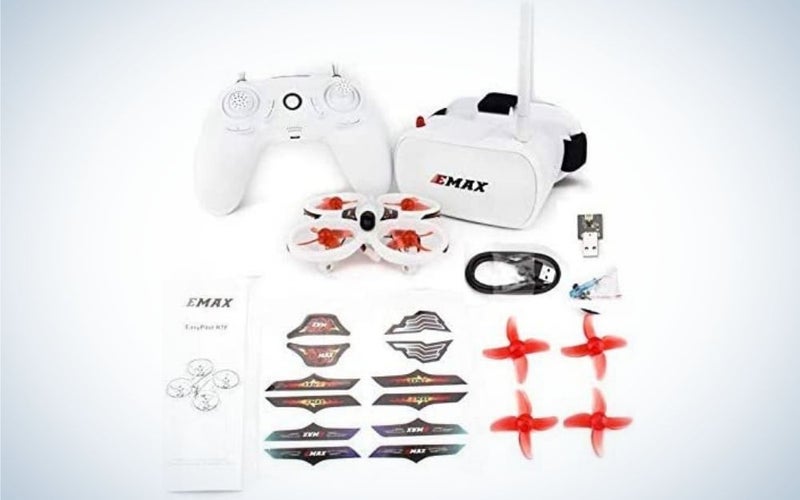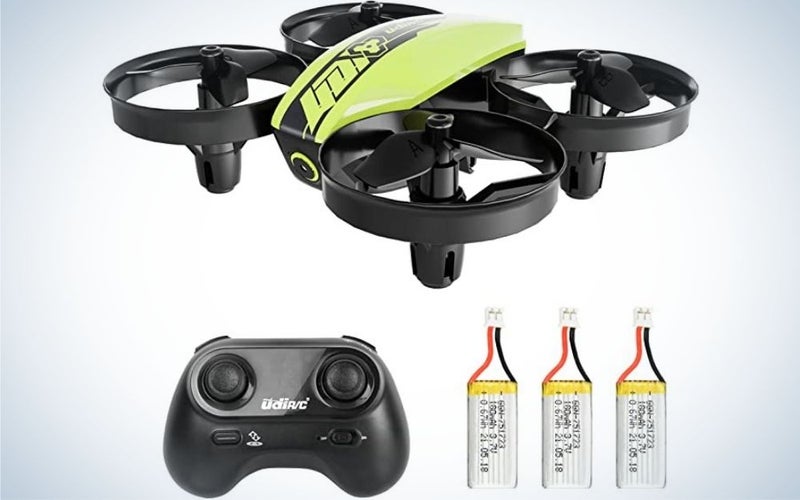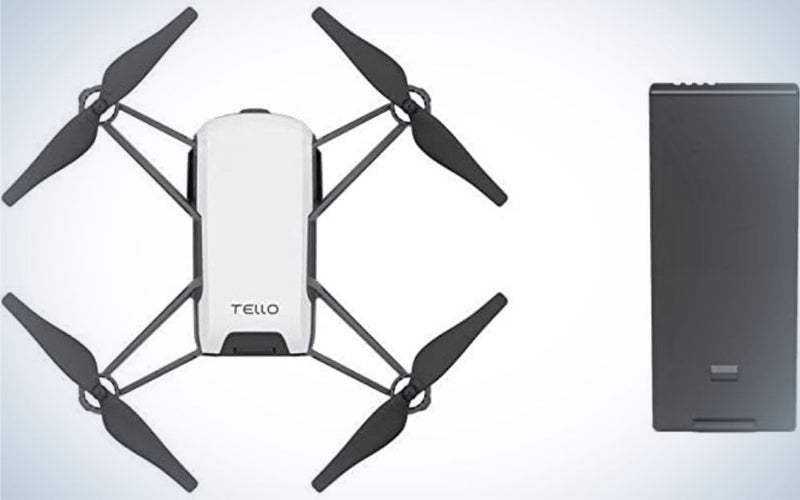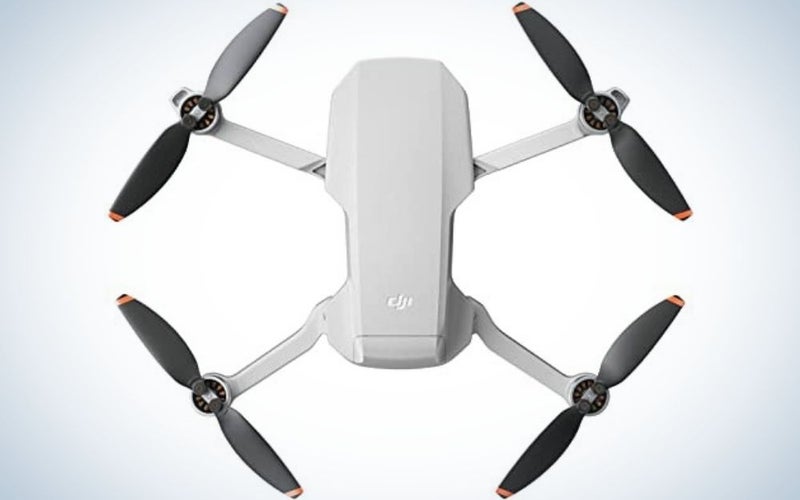We may earn revenue from the products available on this page and participate in affiliate programs. Learn more ›
Indoor drones might sound like an odd concept. Flying machines make their homes in the open skies where there’s room to roam and no ceiling fans to contend with This outdoor limitation is no longer the case. Not only are drones today more accessible to the average consumer, but some of the best drones are specifically designed for indoor use. The increase in options is great for people looking to capture birds-eye views of intimate gatherings, family photos, or other fun content. Indoor drones aren’t just for casual users either. For example, professionals who need views of hard-to-see crevices to determine problems may get great use out of these devices. Other indoor drones are suitable for use as toys for children over a certain age who have a curious and creative soul. We looked at a variety of these interesting machines to find the best indoor drones thus far.
- Best overall: Potensic P5 FPV
- Best for beginners: EMAX EZ Pilot FPV Drone
- Best for children: Cheerwing U46S Mini Drone
- Best budget: Tello Quadcopter Drone
- Best for professionals: DJI Mini 2
How we picked the best indoor drones
As fellow photographers and videographers, the writers at Popular Photo took safety, battery life, and camera quality into consideration wherever that was applicable. It was important to include camera-less indoor drones as well since many parents and drone enthusiasts don’t have the same motives for getting an indoor drone. Finally, we tried to look at different price ranges that still provided the best possible quality in their bracket.
The best indoor drones: Reviews & Recommendations
Best overall: Potensic P5 FPV
Potensic
Why it made the cut: Potensic is known for manufacturing great drones at affordable prices, and the P5 FPV is no exception. Featuring a 2.7K camera and three different speed modes, indoor drone enthusiasts are sure to be pleased.
Key features:
- Flight time: Up to 40 minutes
- Dimensions: 14.9 x 10.2 x 4.7 inches
- Weight: 6.6 ounces
Pros:
- Lightweight
- 5G Wifi camera
- Inexpensive
- Useful companion app
Cons:
- Propeller guards are sold separately
The Potensic P5 FPV is a budget-friendly drone for travelers, enthusiasts, or even indoor drone flyers. Weighing only 6.6 ounces and featuring three speed modes, both beginners and advanced-level users will have plenty of options for what they do with this drone. Another bonus? Its battery can last up to 40 minutes depending on use, and its 2.7K camera takes high-quality pictures and captures great video.
The Potensic Fly App allows users to guide the drone and access its features, such as trajectory flight, takeoff, and gravity control. It also includes 5G Wifi capabilities and can be controlled at a distance of up to 656 feet—more than any indoor drone enthusiast will need. Note that you will need to buy propeller guards separately for improved safety when flying inside.
Best for beginners: EMAX EZ Pilot FPV Drone
EMAX
Why it made the cut: The EMAX EZ Pilot FPV Drone is designed for those new to indoor racing and FPV. It’s fast yet safe and comes in a comprehensive kit that includes everything a beginner drone user needs to start flying immediately.
Key features:
- Flight time: 3-5 minutes
- Dimensions: Not provided
- Weight: 1.2 ounces
Pros:
- Can fly with the remote or FPV goggles
- Built-in propeller guards
- Includes FPV goggles
- Compact and lightweight
Cons:
- Short flight time
- Pricey
The EMAX EZ Pilotis a great drone for beginners looking for something they can use around the house. It has a compact and lightweight design so that you can worry less about crashing in smaller spaces. The drone comes with a simple controller design to ensure that users will quickly get the hang of how to best use the drone. It also comes with FPV goggles which serve as a great introduction to first-person view (FPV) flying.
The EZ Pilot is ideal for beginners because of the flight modes and features. It has three experience level modes, with level one allowing you to fly the drone with a single stick. You won’t need to figure out which stick makes the drone move in which direction. Level two ups the difficulty slightly and lets you fly with two sticks, though it does have a self-leveling feature to keep things simple. Level three introduces the options for flips and tricks for even more fun.
Being a small drone in the whoop category (tiny drones), it will have limited battery life; 3-5 minutes in this case. Batteries are cheap, though, so you can easily buy a few backups to keep fly time going. The drone itself is a bit pricey considering it’s meant for beginners, but it is durable and has built-in propeller guards, so it should survive plenty of crashes.
Best for children: Cheerwing U46S Mini Drone
Cheerwing
Why it made the cut: With three speed modes, protection guards for all propellers, and a lightweight design, this drone balances the joy of a flying toy while also keeping children safe.
Key features:
- Flight time: 6-7 minutes per battery
- Dimensions: 3.54 x 3.12 x 1.25 inches
- Weight: 7.8 ounces
Pros:
- For use indoors and outdoors
- Sturdy build
- Built-in propeller guards
- Easy for children to use
- Very affordable
Cons:
- Doesn’t come with a camera
- Batteries need to be changed and charged consistently
Both children and adults will enjoy flying the Cheerwing U46S mini drone. With its safety features and intuitive controls, the Cheerwing is a great first drone for anyone who has an interest in using drones as a hobby. It has just enough safety features to keep everyone happy and can be safely used indoors.
It comes with a 2.4GHz control system, altitude hold mode that keeps the drone flying at a predetermined altitude, and a low battery warning that lets users know to bring the drone back to its home position so it won’t get lost. This Cheerwing also includes an emergency stop feature in case things get rough. Don’t let the lack of a camera turn you away from this drone. It’s simply one fewer component you’ll need to take care of—something any parent or beginner will definitely enjoy.
Best budget: Tello Quadcopter Drone
DJI
Why it made the cut: Powered by DJI, the Tello Quadcopter Drone includes a 5MP camera, a lightweight design, and can fly up to 17mph. It’s budget-friendly and perfect for indoor use.
Key features:
- Flight time: Up to 13 minutes
- Dimensions: 7.9 x 7.7 x 2.1 inches
- Weight: 7.94 oz
Pros:
- 5MP camera for great shots
- Lightweight and sleek design
- Can be used with a compatible controllers
- Can be used with a corresponding app
Cons:
- Dedicated controller must be purchased separately
The Tello Quadcopter Drone is a great budget indoor drone made for beginners. It features a 5MP camera with electronic image stabilization that will ensure you’ll get great shots every time, and can provide up to 13 minutes of flight time per battery. Users can choose to control the drone fully with a smartphone app and share their footage with friends and family on social media.
More comfortable with a remote? No problem! This indoor drone can be used with a compatible remote control, though you do need to purchase that separately. It can be controlled manually or using intelligent flight modes as well. Programmers and coders can also experiment with Scratch programming that can be used to fly this drone.
Best for professionals: DJI Mini 2
Why it made the cut: An industry leader, DJI’s Mini 2 is an excellent choice for professionals who need to shoot indoors and crave something more affordable than the Mavic line.
Key features:
- Flight time: Up to 31 minute
- Dimensions: 9.6 x 11.3 x 2.2 inches (unfolded with propellers)
- Weight: 8.78 pounds
Pros:
- 12MP still photos and 4K video
- Foldable
- Intelligent modes
- Stable flight
Cons:
- A bit bulky for indoor use
The DJI Mini 2 is a well-rounded drone that will work for indoor and outdoor flight. It has level five wind resistance and a max altitude takeoff of 4,000 meters, making it stable in the air regardless of the conditions or where you are located. The downward sensors and GPS help with indoor flight. However, it does not have obstacle detection, so adding propeller guards would be advisable. Nevertheless, it is a great choice for professionals who shoot indoor and outdoor events.
With a 12MP camera and 4K capabilities, you won’t ever get dud photos from this device. Professionals can also easily transfer photos from the drone onto their phones or tablets for maximum efficiency, which clients are bound to appreciate. Additionally, the drone takes great panoramic photos, is easy to control, and includes templates for days when your creativity could use the assistance. The best part? It’s a foldable drone that you can easily transport to and from gigs.
Things to consider before buying the best indoor drones
The best way to decide whether or not to buy a potentially expensive item, such as an indoor drone, is to consider why you’d like to buy one. For example, a professional photographer has completely different needs than someone who wants to buy an interesting and cool toy for their child. Below we help you sift through questions that can help you start on your journey to make the best choice for yourself or a loved one.
Safety features
Flying a drone indoors was once a huge no-no. As a responsible indoor drone operator, you should still pay attention to your surroundings as you use your drone. However, manufacturers have added more safety features that can help you focus on capturing great photos. Every brand is different, but there are some standard features you can expect nowadays. Some indoor drones offer automatic hovering, which allows a drone to stay in place when the battery is about to die. You can also look for drones with a return to home feature. This feature allows you to push a button so the drone can return to the “home” area you designate.
Propeller guards are also essential in indoor drones, especially for novice users. These guards will protect walls and objects in your home and people that may be inside as well.
Range
Depending on your potential use, you may not need a drone that can fly the highest or farthest. Amateurs, children, and teens may simply be happy to have a working drone that takes cool indoor pictures. Likewise, if you strictly use your drone for indoor settings, the range may be irrelevant. On the other hand, professionals or people who intend to use a drone for something more serious or in more varied settings may need to consider a drone with a long range. Some drones have a radius as far as seven miles, which is not necessary for someone strictly flying a drone in a small indoor space.
Camera quality
Decreasing costs and increasing competition mean that you can expect decent camera quality even in inexpensive drones. You can find even children’s drones at a reasonable price with cameras that take 1080p or even 4K, videos and photos. Amateurs may be surprised to find that the inexpensive indoor drone they purchased actually takes decent photos, and professionals can rest assured that better quality no longer necessarily means breaking the bank.
Control features
Drones require a controller that can help you guide them in the right direction. These use radio signals that help you tell the drone where to go. Some models may include a screen that lets you see your footage as you take it live. Drone controllers without a built-in screen may require you to download a separate app that allows you to fly in FPV (first-person view) using your phone. Being able to see your live view is helpful if your drone goes out of sight, as you’ll still be able to see where it is and what the surroundings are to avoid crashing. However,any cheap indoor drone controllers don’t include this feature and paying extra just to see your footage on an external controller may not be necessary, depending on your intentions.
Drone controllers without a built-in screen may require you to download a separate app that allows you to fly in FPV (first-person view). No matter what type of controller and drone you have, you’ll be able to do the same basic things, such as turning your drone right or left, moving it forward and backward, and deciding how fast your drone should go. Other common extra controls include one-button landing and takeoff, altitude hold, and occasionally flips.
Smart drone—or not?
Many camera drones offer GPS that helps the user control the drone destination, set a home location, or even plan routes that allow a drone to work without supervision. Smart drones may include extra sensors that help them find obstacles and avoid them. Other uses for these sensors include setting up your drone to follow someone so you can focus on different tasks.
FAQs
Q: How much do indoor drones cost?
How much indoor drones cost varies, as not all indoor drones are made equally. Bells and whistles will often cost you extra, but working indoor drones can cost as low as $2.99 (plus taxes, shipping, and handling). Keep in mind that battery-operated indoor drones mean you’ll need to pay for new batteries from time to time, though many USB-powered models are available.
Q: How far can a drone fly on a single charge?
How far a drone can fly on a single charge also varies on the drone. Some drones can only fly for up to 3 minutes, while others may be able to fly for up to 40 minutes on a single charge. The battery life limits how far they can go and for how long, so take stock of your needs and make sure to look at manufacturer estimates if this is important to you.
Q: What is the life expectancy of a drone?
Several factors contribute to a drone’s life expectancy: the quality of its components, how easy they are to fix or replace, and its battery’s life expectancy. Your use, maintenance, and common sense are crucial in ensuring your drone will last as long as possible. How often you use your drone can also influence how long it lasts. Conventional wisdom states that your drone can last up to 1-2 years.
Q: Can drones fly silently?
Drones do not fly silently. If you’ve ever flown a drone, you may have noticed an insect-like buzz.. The noise isn’t an issue for outdoor use but can be a problem during indoor events or when children want to use an indoor toy drone while parents or siblings are busy. Wing construction has a lot to do with how much noise emanates from drones. Seventy decibels is a reasonably quiet noise level for a drone, and there are brands that offer drones that meet this standard.
Q: What is the maximum weight a drone can carry?
The maximum weight a drone can carry is entirely dependent on the drone. Indoor drones are inherently smaller devices and, as such, won’t be able to carry nearly as much as larger drones. Most small drones can handle just ten ounces at most if that. If you need to use your drone to attach things, or you have a curious child who decides to use an indoor drone to transport items around the house, check the weight limits of a drone before purchase.
Final thoughts on the best indoor drones
- Best overall: Potensic P5 FPV
- Best for beginners: EMAX EZ Pilot FPV Drone
- Best for children: Cheerwing U46S Mini Drone
- Best budget: Tello Quadcopter Drone
- Best for professionals: DJI Mini 2
Indoor drones allow users to fly, race, and take interesting pictures and videos in the comfort of their homes. They also give an edge to professionals who want to find new points of view to make their clients happy. So if you’re looking for something safe to use in the home, to give to a child or teenager as a gift, or even an option for a professional indoor drone, these options should help you choose.
Why trust us
PopPhoto has a long history of delivering the opinions of some of the sharpest and most prolific camera dorks the world has to offer. Since 1937, we’ve been reviewing cameras, providing wisdom from well-known photographers, and generally just nerding out about all that goes into making great pictures. Our current crop of writers and editors have decades of professional photography and camera writing experience among them. Collectively, we’ve probably shot with just about every camera and lens combo you can imagine—as well as some obscure stuff you may not even know about. Remember the Casio Tryx folding camera? PopPhoto does.
We also get that buying a camera is a big decision, which is why we’re dedicated to helping folks choose the right one (or, in our case “ones”) for their needs. Case in point: Handing over top dollar for an expensive rig may leave you unsatisfied if it doesn’t fit your preferred shooting style. Sure, a $6,000 sports-oriented DSLR can capture landscapes, but do you really need to do it at 30 frames-per-second? No, you don’t.
